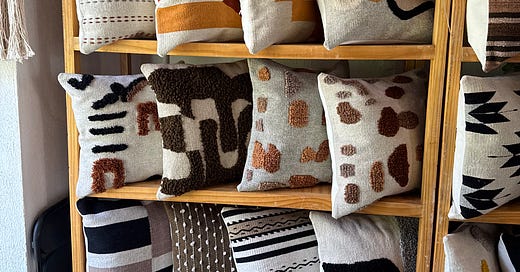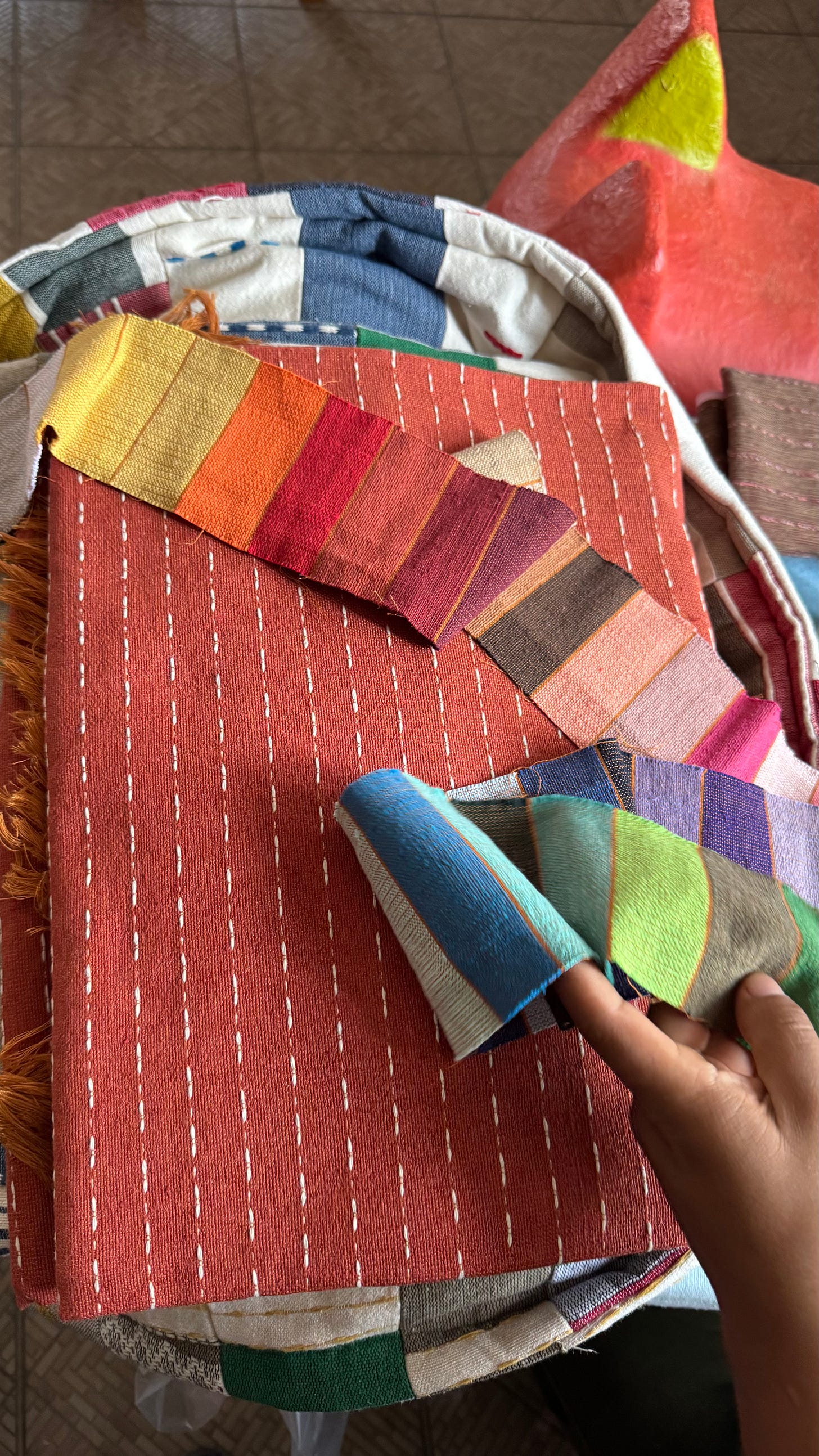To Embrace Artisan Crafts in Mexico, Let Go of Modern Materialism
In Oaxaca, often handmade goods are less expensive than those from factories
These days, when I’m not writing, I’m often playing tour guide, and more often than not, that means shopping.
I love showing people Oaxaca, which I hope is evident in this newsletter, but there’s an immediate and tactile wonderfulness when it comes to taking people shopping. We moved to Oaxaca for many and varied reasons, and now, given the political climate in the United States, I like to think we look particularly smart for having done so. What I typically downplay, though, is the degree to which I was swayed by the stuff in Oaxaca and my intense attraction to it. After all, even though we live in a society that worships materialism, it feels kind of gross to admit that one of the reasons you wanted to move somewhere is because it has great shopping.
Oaxaca pulls you between two types of materialism, though. On one hand, you have the artisan goods made by people actually from Oaxaca. They don’t just live in the community you’re shopping in, their house is probably part of the same building that holds the tienda you’re browsing through. Artisans here are so phenomenally talented, and goods are generally so affordable for someone tied to a higher (ie, non-Oaxacan) income bracket, that you could fill your suitcases to the point of popping the seams and still emerge from this place having spent a mere fraction of what you would have back home for comparable (and not as nice) items. You can also feel good about your purchases. If you shop in a village, you’re likely buying things directly from the people who made them. Cutting out the middleman means artists and artisans make more money per sale, and that cash tends to stay in their community. You also get a price that’s very likely lower than what you’d find elsewhere. Everybody feels like they’re getting a good deal.
On the other hand, you have commercially-made material goods, which in Mexico can be in weirdly short supply. Stuff, particularly from big, American brands, is sold for American prices, and there are very rarely deals to be had. Amazon is utterly untrustworthy here, largely because the vast majority of its stuff comes from third-party vendors, and the selection is pitiful and expensive. Imports are also so expensive that even big, familiar brands like Walmart carry a fraction of the selection you’d find in the United States. And yet, because of the sheen American products carry, the demand for them is enormous. People in Oaxaca, being largely poor, are extremely brand-conscious. Nothing signals wealth quite like owning Nike shoes, Legos, iPhones, name-brand jeans, and having a fancy car.
This situation creates a very strange scarcity. The handmade goods that you’d immediately say are the most luxurious are in ample supply and available for purchase all around you, while the expensive, mass-manufactured stuff that’s not special at all can be hard to come by. As a result, the things that are the least special take on a weird, additional value. The only way I’ve found to break this sort of terrible paradoxical situation is to indulge yourself in what makes this country, and especially the state of Oaxaca, so special.
Over the past month, we’ve had three separate sets of visitors, and I’ve taken all of them to see artisans and shop owners we’ve come to know. Most recently, I took our friend Stephanie to Pueblo Nuevo, a town that sits alongside the larger, bustling, working-class town of Viguera. Pueblo Nuevo’s claim to fame, other than having one of the best Día de Muertos festivals in Oaxaca, is that it’s home to several workshops producing cotton products like blankets, pillow cases, napkins, and tablecloths, all made on large, human-powered, wooden looms.
Our favorite shop there, Textilera del Manantial, sells an enormous assortment of cotton goods. Stephanie and I were both bewitched by the piles of hand-stitched goods, and as Stephanie examined napkins, I began looking at tablecloths. A few designs popped out at me, and when I began asking about colors and designs, the shop owners said to me, “We can make this for you in any color you want.”
"How much would that cost?” I asked, and the younger owner, Álvaro, opened up the calculator app on his phone. After a few moments of calculations, he told me the price would actually be the same as the item I was looking at, around $15.
This is the experience that’s so hard to wrap your mind around. The price quoted to me is not one I negotiated, nor was he offering a discount, and artisans of all kinds can make things for you to virtually any specification, as long as their equipment and skillset allow for it. This isn’t like going to the store and saying, “I’d like the blue one!” This is a situation where you’re going to be asked what your preferences are for dimensions, color of the dye, color of the contrasting thread, whether you want some sort of fringe (and if so, what design you’d like it to have), where you want designs to appear within the textile and how they should be spaced. You could be asked if you’d like commercial or organic cotton, or if you prefer natural or artificial dyes. The number of options is extraordinary and intimidating.
Whenever people come to visit us, we ask them to bring us things from the U.S. that we can’t get here. I don’t see that changing anytime soon, either. There are material comforts that we miss (mostly cooking ingredients!), and we should take any chance we can get to bring those things into our home. But I think that the cure for that feeling of scarcity that we sometimes get is to remember that we’ve traded one form of materialism for another. It might be hard and expensive to get something like a nice bluetooth speaker, or a Kindle, but when the guy fifteen minutes away from your house can make something for you, to your direct specifications, turning your material hopes and dreams into a product you can put in your home and use every day, you feel lighter than you did before.








I love Oaxaca so much—have been there like 10 times. If I were going to live in Mexico, it would be the place! I always come home with textiles, alebrijes, pottery, jewelry—my home has so much Mexican folk art I could probably open my own tienda. I love that I am connected to these artists. On my most recent trip my driver went way out of his way and off our planned itinerary to take me to a small village where elderly women made the most gorgeous barro rojo. If I’d had space in my luggage I’d have bought more. I love thinking of those women’s hands forming the pieces I have.
Your ability to find amazing spots here continues to amaze (as does the artistry of Oaxacan craftspeople).